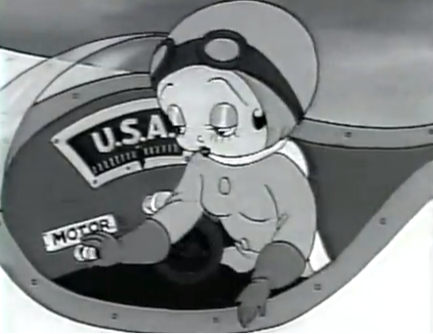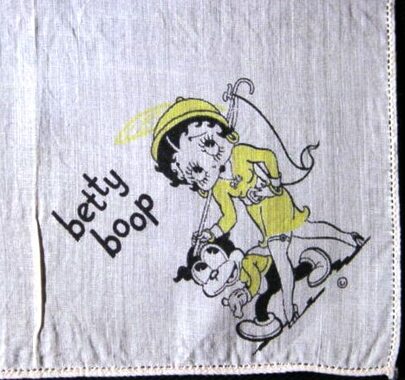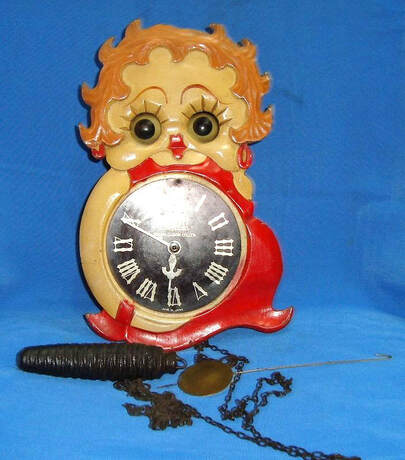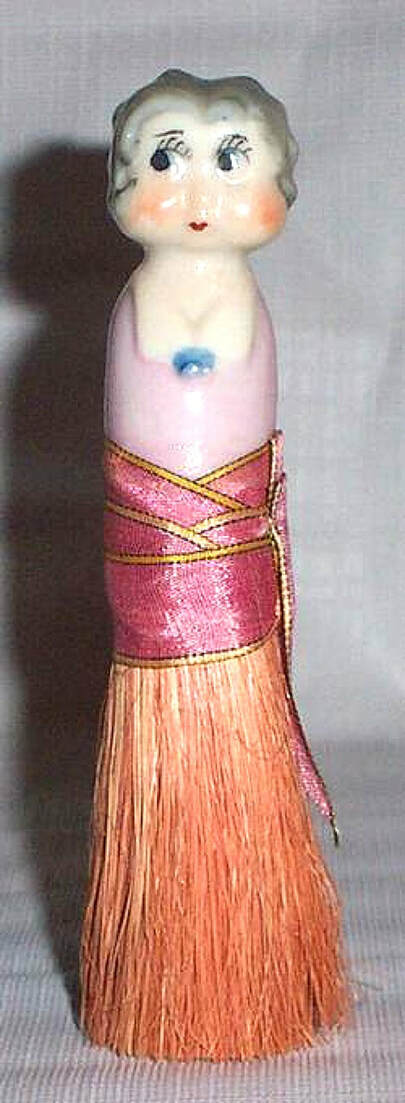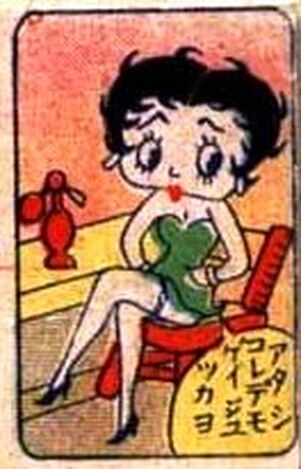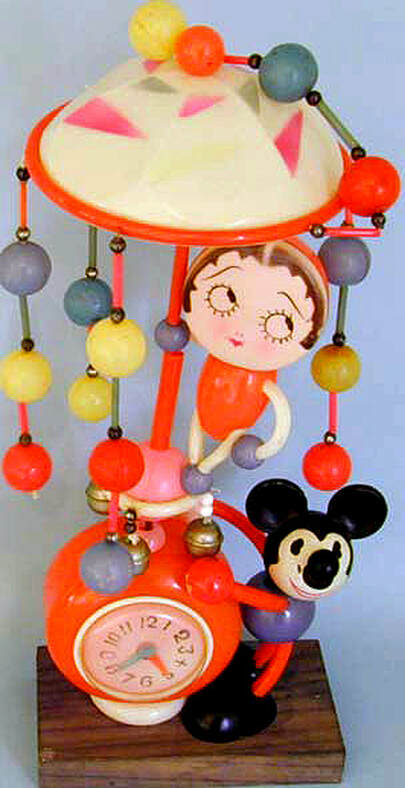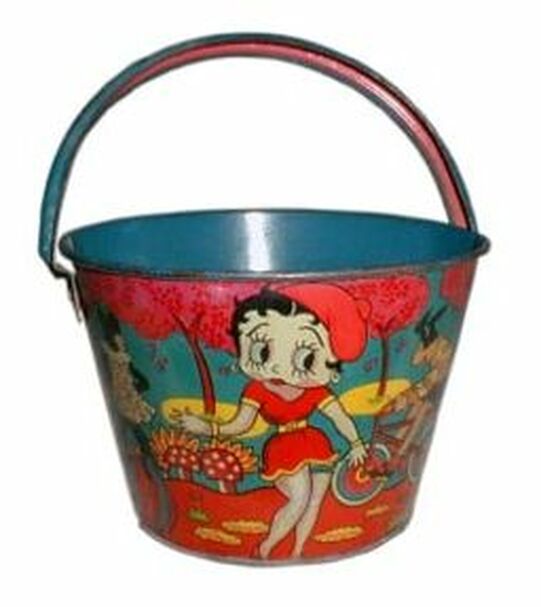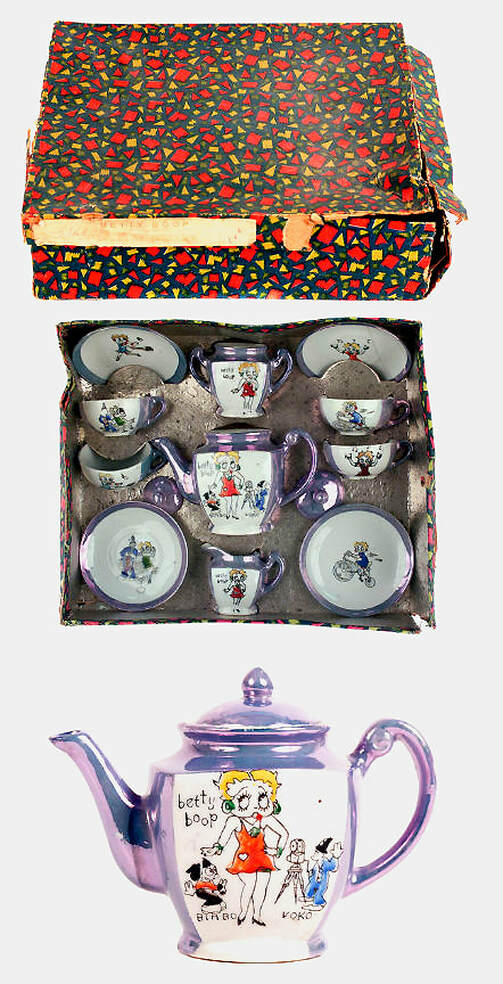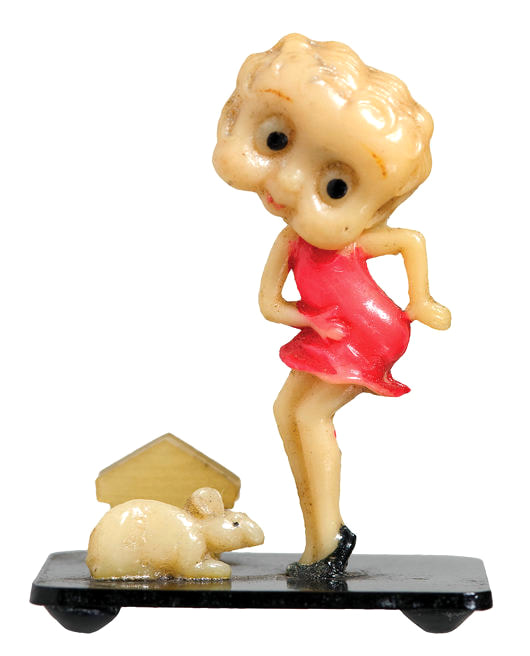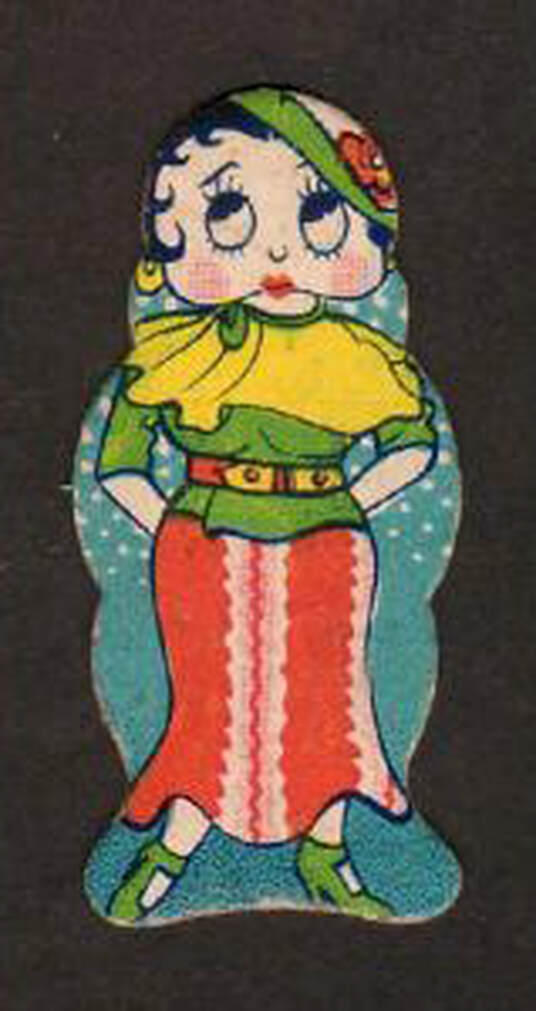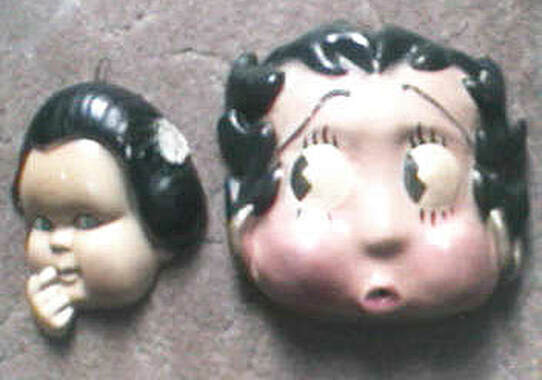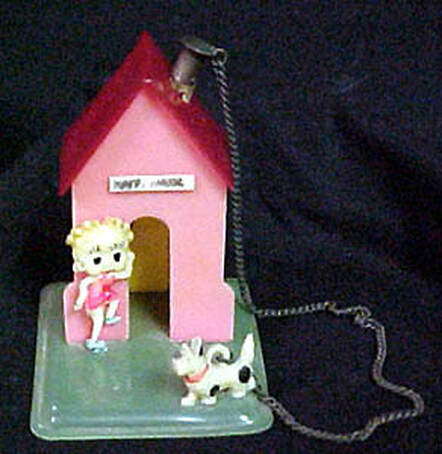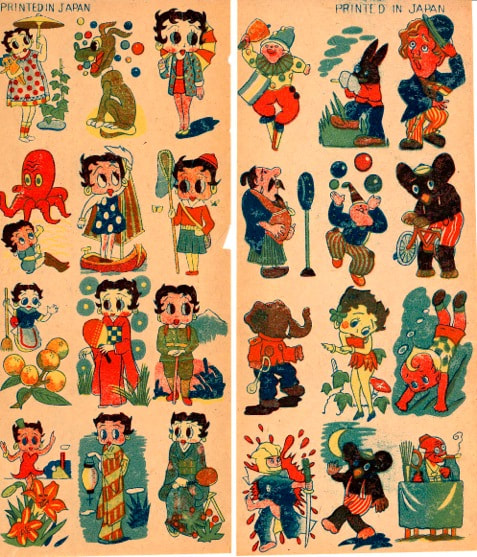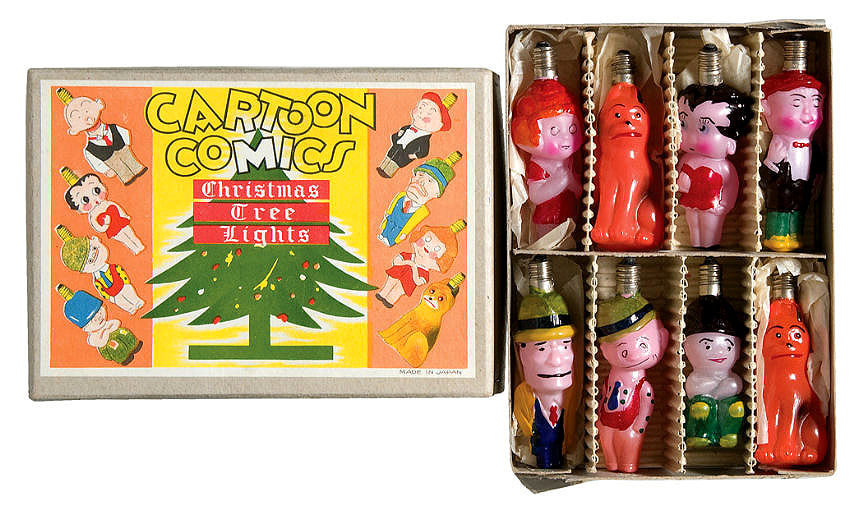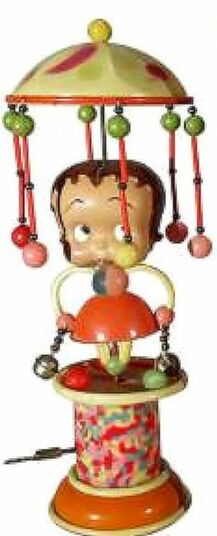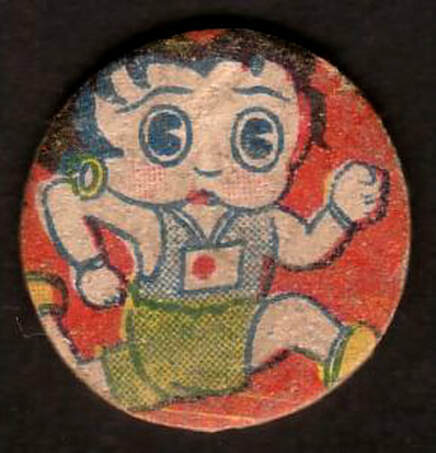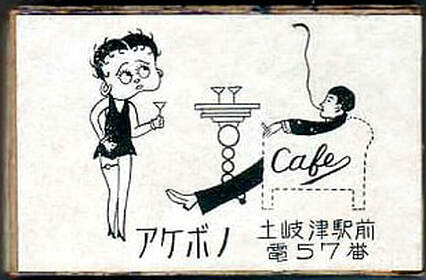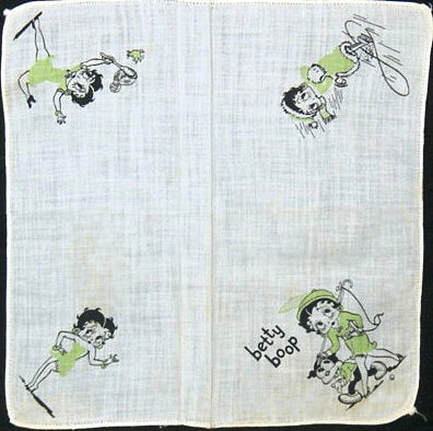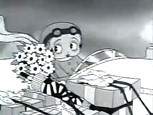|
|
Betty’s trip to Japan in the 1935 cartoon “A Language All My Own” is more than a wonderful cartoon; it’s an amazing story of ambassadorship as well! This carefully crafted love letter to the Japanese people solidified Betty’s already growing popularity in Japan, a popularity that exists to this day. In it, Betty not only pilots her own plane and wears a kimono, she actually sings in Japanese!
We hope you enjoy this unique film and it’s amazing history below, followed by a gallery of beautiful, rare Japanese memorabilia of the period from the amazing collection of Len Ellis. The attention to detail in this film is remarkable and very deliberate. Head animator, Myron Waldman, was so concerned that the depiction of all things Japanese be authentic, that he asked several Japanese exchange students to preview the film before it was released. |
|
The attention to authenticity was so great that it led to speculation about which real theater in Japan the one in the cartoon was modeled after. It was concluded that due to the size of the stage and the atmosphere, it matched a theater in Kyoto’s Miyagawa-cho district, except that it does not have a roof suitable for landing an airplane.
That Betty pilots her own plane is likely a nod to Amelia Earhart who, just months before the release of this film, became the first woman to fly solo across the Pacific Ocean (having already become the first woman to fly solo cross the Atlantic in 1932).
The huge crowd that welcomes Betty upon her arrival in Japan is also reminiscent of a real event: the crowd of over 500,000 baseball fans who showed up to welcome Babe Ruth and nineteen other Major League players to Japan in November of 1934. The players were in Japan as part of a goodwill tour during which they played Japanese baseball teams. This film also marks another historic milestone: the very last film in which Betty wore her traditional short skirt and displayed overtly sexual behavior. The Hays Code, a set of moral self-censorship guidelines for the U.S. film industry, was just about to go into effect and the impact on Betty would be severe. Starting with her next film, “Betty Boop and Grampy,” Betty dresses and behaves far more modestly.
A bit of oft-repeated folk-lore says that Fleischer animators, as a secret jibe at the censors, altered the words in the Japanese lyrics of the song so that Betty sings, “Come to bed with me and we’ll boop-oop-a-doop!” While it’s a funny story, it’s not a true one. The Japanese lyrics are basically a translation of the English ones.
|
GALLERY
|
Most original Betty Boop pieces from the 1930s were made by small enterprises in Japan for the US popular market. No records were kept of these unauthorized pieces, which were low-cost items often sold through catalogue companies such as Montgomery Ward or Sears. Many items, such as plates and bowls as well as this whirligig, were the result of the innovative approach taken by Japanese manufacturers in the 1930s. Cartoon characters from different studios were often combined, since copyright and trademark rules were not at all enforced.
The items in this Gallery come from the collection of Len Ellis, a well-known Betty Boop collector and author of the book “The Definitive Guide to Betty Boop Memorabilia.” In addition to offering us the opportunity to view these rare and highly collectible items, Len has provided the accompanying text which introduces us to each piece and its place in collecting history. You can find Len’s monthly Blog about Betty collectibles at the King Features Betty Boop site: http://bettyboop.com/category/collectors-corner/ – Thanks Len!
|

